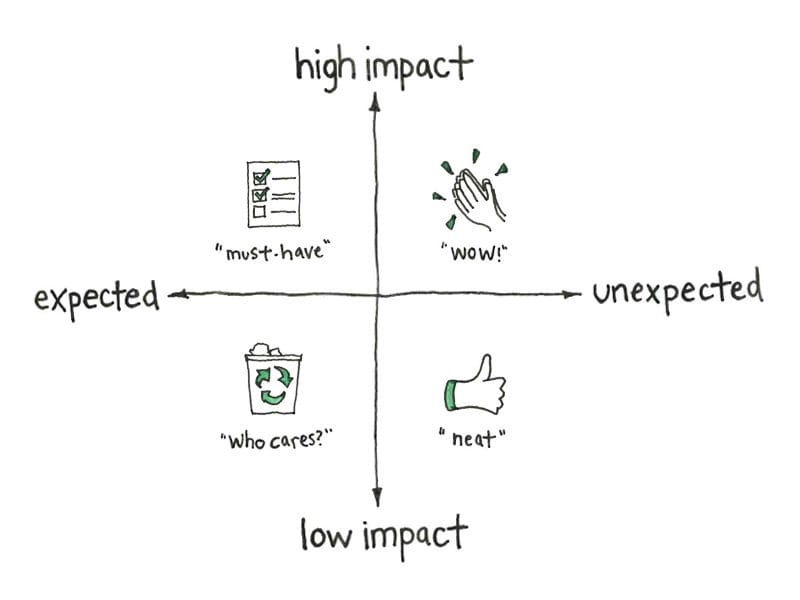There are many prioritization frameworks for product managers. I came across this one which focuses on customer impact vs. customer expectations, and I appreciate its simplicity and ease of understanding.

According to the framework, the x-axis represents customer expectations and the y-axis customer impact.
As you prioritize product initiatives using the framework, it enables you to identify products that will have both a high impact and exceed customer expectations; i.e., “wow” them. This is how you truly delight your customers.
I’ll go through each of the 4 quadrants and share some examples from my own industry, an e-wallet super app for users in Southeast Asia.
High-impact + Unexpected = Wow
Building products that provide high customer value and delight them unexpectedly is a great way to differentiate your product from your competitors.
For example, in the e-wallet space, which is based around payment convenience, we added a high-interest savings account and a mutual fund investment feature. In doing so, we provided wealth-building capabilities for many users who would not normally expect to have easy access to such products.
High-impact + Expected = Must-have
The core features of your product are the main reasons your customers are using it. Of course, they must deliver a high level of customer value; otherwise, your users will defect to your competitors.
If your product is missing a standard feature within your industry that your users expect, you are missing a “must-have” feature, and you should plan to fill that gap quickly.
From my own experience, as a payment tool, our e-wallet lets you scan a QR code to pay someone. However, we did not support importing QR codes stored as images on the user’s camera roll. This is an everyday payment use case, so we added it based on customer feedback.
Low-impact + Unexpected = Neat
Sometimes you add features or functionality that your users don’t expect but do not significantly impact their lives. These features are “neat.” Sometimes, they are “wow” features that didn’t meet your expectations, or they can be minor quality-of-life improvements.
Using our e-wallet example, we introduced the ability for users to share their transaction history with others (so parents can monitor their children’s activity, for example). It’s a handy feature for those users, but it does not dramatically improve their financial lives through its presence.
Low-impact + Expected = Who Cares
Some product features are necessary but have a low customer impact. If you can reduce the friction involved in using them or even remove them altogether, you can create a better customer experience.
For our e-wallet, users must create a password when registering. However, despite displaying the password requirements below the input field, some users find this step quite challenging.
Therefore, in the short term, we are working on making it clear in real-time as the password requirements are met, and in the long term, we are working on removing this requirement altogether.
From Wow! to Must-have
What’s interesting is that, over time, wow! features become must-haves. For example, every modern phone has a touch screen and a high-quality camera.
This is why product teams must keep innovating to develop more wow! features to keep their users happy and stay ahead of the competition.
